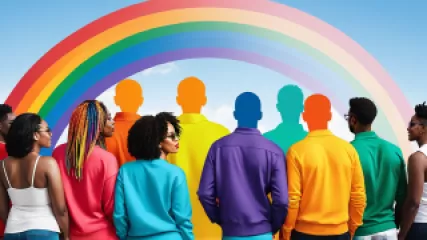Top 10 Myths About Sexual Orientation Debunked
Sexual orientation is a fundamental aspect of human identity, yet it is often surrounded by misconceptions and myths. These misconceptions can lead to prejudice, discrimination, and misunderstanding. In this article, we aim to debunk some of the most common myths about sexual orientation, providing accurate information and promoting understanding and acceptance.
Myth 1: Sexual orientation is a choice
One of the most prevalent myths about sexual orientation is that it is a conscious choice. However, research consistently shows that sexual orientation is not something that individuals choose or can change at will. Sexual orientation is a deeply ingrained aspect of a person's identity, influenced by a complex interplay of genetic, hormonal, and environmental factors.
Myth 2: Sexual orientation can be "cured" or changed through therapy
Contrary to what some may believe, sexual orientation cannot be "cured" or changed through therapy. Attempts to change a person's sexual orientation, also known as conversion therapy, have been widely discredited by major mental health organizations. Instead, therapy should focus on providing support, acceptance, and guidance for individuals exploring their sexual orientation.
Myth 3: All LGBTQ+ individuals experience the same struggles
Another common myth is that all LGBTQ+ individuals have the same experiences and struggles. While there are shared experiences within the LGBTQ+ community, each individual's journey is unique. Factors such as race, ethnicity, gender identity, socioeconomic status, and geographic location can significantly influence the experiences and challenges faced by LGBTQ+ individuals.
Myth 4: LGBTQ+ individuals are more likely to be mentally ill
Contrary to popular belief, being LGBTQ+ does not make an individual more prone to mental illness. Mental health issues among LGBTQ+ individuals are often a result of minority stress, which stems from societal prejudice, discrimination, and stigma. Access to LGBTQ+-affirmative mental health support can play a crucial role in promoting mental well-being.
Myth 5: Sexual orientation is a phase
It is a common misconception that sexual orientation is a temporary phase that individuals go through before settling into a heterosexual or homosexual identity. However, research indicates that sexual orientation typically emerges during adolescence or early adulthood and remains relatively stable throughout a person's life.
Myth 6: LGBTQ+ individuals are a threat to children
There is no evidence to support the myth that LGBTQ+ individuals pose a threat to children. Numerous studies have shown that children raised by same-sex couples fare just as well emotionally, socially, and academically as children raised by opposite-sex couples. What matters most for a child's well-being is a loving and supportive family environment, regardless of the parents' sexual orientation.
Myth 7: LGBTQ+ individuals are more promiscuous
Another myth perpetuated about LGBTQ+ individuals is that they are inherently more promiscuous than their heterosexual counterparts. However, studies consistently show that sexual behavior varies widely among individuals, regardless of sexual orientation. It is important to avoid generalizations and stereotypes when discussing the sexual behavior of any group.
Myth 8: Sexual orientation is a Western concept
Sexual orientation is often erroneously perceived as a Western construct imposed on other cultures. However, diverse sexual orientations have been recognized and accepted in many non-Western cultures throughout history. The understanding and acceptance of sexual orientation may vary across cultures, but it is not limited to Western societies.
Myth 9: LGBTQ+ individuals are more likely to abuse substances
Contrary to popular stereotypes, being LGBTQ+ does not inherently predispose individuals to substance abuse. Substance abuse can be influenced by a range of factors, including societal stressors, discrimination, and lack of support. Providing LGBTQ+-inclusive substance abuse prevention and treatment services is crucial in addressing the unique needs of this population.
Myth 10: Sexual orientation can be determined by appearance or mannerisms
It is important to recognize that sexual orientation cannot be determined by someone's appearance or mannerisms. Stereotypes and assumptions based on appearance can perpetuate harmful biases and contribute to the marginalization of LGBTQ+ individuals. Sexual orientation is a deeply personal experience that should be respected and affirmed based on self-identification.
By debunking these common myths about sexual orientation, we can challenge misconceptions, promote understanding, and create a more inclusive and accepting society. It is essential to educate ourselves, question our assumptions, and engage in meaningful conversations to foster empathy and support for individuals of all sexual orientations.






